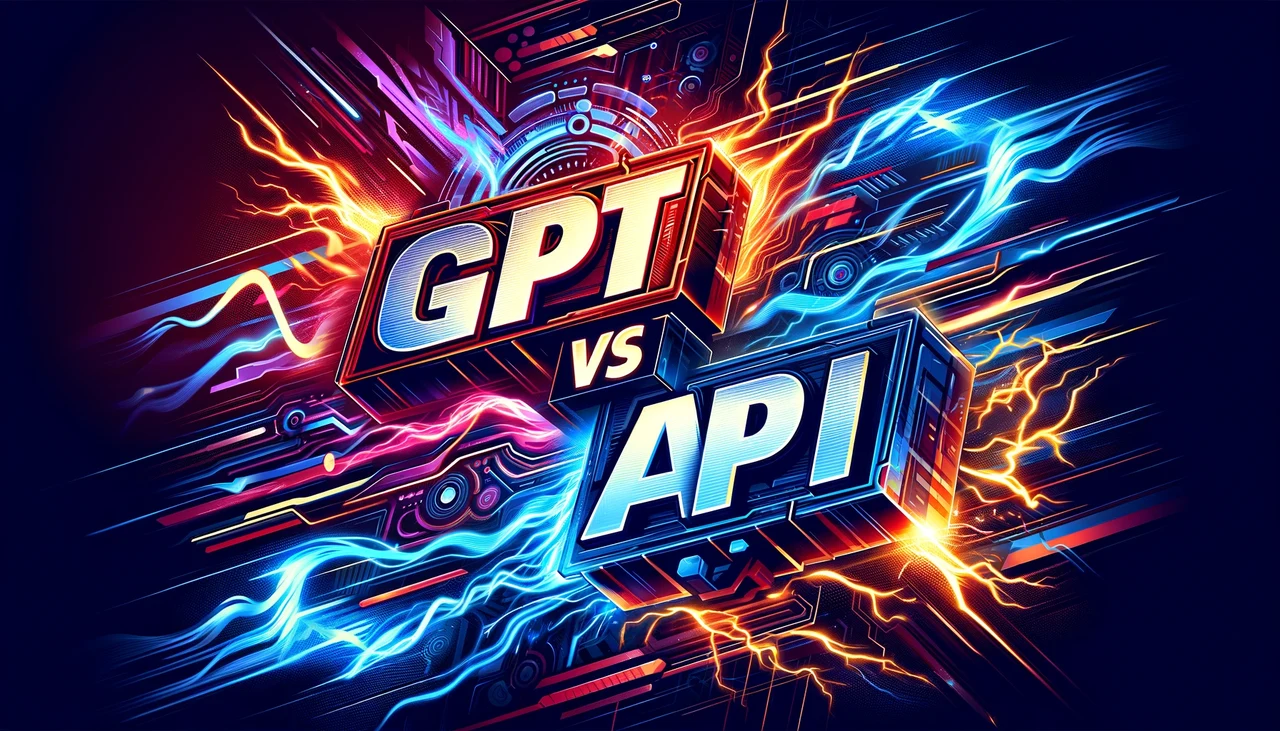OpenAI has made available tools that can easily enable almost anyone with Internet access to be able to create powerful AI tools and applications. The launch of OpenAI’s GPT platform and its Assistants API provides a wealth of opportunity for you to improve your productivity, create AI powered applications to resell and improve the workflows of your business overnight. But which one suits your process or needs more effectively? This GPT vs Assistants API comparison guide will provide more information on both allowing you to make the right choice for you get started.
If you have never heard of and API are new to AI and building AI workflows then I would highly recommend checking out the OpenAI GPT system first as the Assistance API does require a little more knowledge and sometimes a little coding knowledge depending on what you’re creating. However once you have your API from OpenAI you can easily use it with no code system such as Zapier, Make and others. However before you make your decision check out the video and GPT vs Assistants API comparison. Understanding the differences between these tools is crucial for choosing the one that best fits your objectives.
Custom GPTs are built on the well-known ChatGPT framework and provide a user-friendly platform that doesn’t demand a deep understanding of coding. They come with expanded knowledge bases and the ability to execute code, making them flexible for a variety of tasks. For those who want to integrate AI into their projects without getting into complex programming, Custom GPTs offer a conversational interface that allows for natural language interaction. This method simplifies the development process by enabling you to communicate with the AI in a dialogue-based manner.
On the other hand, the Assistance API is essential for creating customizable applications. It allows you to add your own logic, craft unique user interfaces, and ensure your application is up-to-date with the latest information. If you’re ready to dive into coding and handle your application’s hosting, the Assistance API provides the tools needed to create a personalized user experience. The possibilities with this API are extensive, from adding chatbots to websites to developing complex applications with tailor-made interfaces.
OpenAI GPT vs API platforms compared
Here are some other articles you may find of interest on the subject of ChatGPT :
When it comes to the user experience, Custom GPTs are tied to the ChatGPT interface, which might be limiting if you want a distinctive look or functionality for your application. The Assistance API, however, offers the freedom to design and implement a user experience that aligns with your creative vision.
Maintenance is another area where these tools differ. Custom GPTs require little upkeep, making them a low-maintenance option. In contrast, the Assistance API needs ongoing management, including updates and scalability plans, to keep your application performing well and responsive as it grows in popularity.
The potential for business growth also differs between the two. Custom GPTs currently have limited ways to make money directly, but OpenAI is planning to introduce a revenue-sharing model with creators, which could open up new opportunities for income. The Assistance API, however, lets you start making money right away through subscriptions or premium features, giving you full control over how you make money from your application.
Custom GPTs are great when you don’t need a specialized user interface. For instance, if you’re looking for a simple chatbot that can be set up quickly without custom design elements, Custom GPTs are a good choice. The Assistance API, however, is better suited for situations where you need to integrate chatbots into websites or create complex applications that demand a customized interface and user experience.
If you value ease of implementation and want to avoid ongoing maintenance, Custom GPTs are the way to go. But if you’re aiming for a highly customized application with direct monetization opportunities and are willing to invest in development and maintenance, the Assistance API is the better choice. Both options offer powerful features, but the best choice depends on your specific needs and the experience you want to provide to your users.
GPT vs Assistants API
OpenAI’s GPT Models (e.g., GPT-3, GPT-4)
Pros:
- Advanced Language Understanding and Generation: GPT models are known for their ability to understand and generate human-like text, making them suitable for a wide range of language tasks.
- Large Knowledge Base: They can access a vast amount of information encoded during training, allowing for knowledgeable responses in various domains.
- Flexibility in Application: They can be integrated into different platforms and used for diverse applications like content creation, chatbots, language translation, and more.
- Continual Improvement: OpenAI regularly updates these models, enhancing their capabilities and accuracy.
Cons:
- Limited Real-Time Data Access: GPT models do not have real-time internet access, which means they cannot fetch or update information post their last training data cutoff.
- Potential for Biased Outputs: Despite efforts to mitigate biases, these models can still produce biased or inappropriate content based on the data they were trained on.
- Resource Intensive: They require significant computational resources for operation, which can be a limiting factor for widespread deployment.
Key Features:
- Autoregressive language generation.
- Trained on a diverse range of internet text.
- Capable of few-shot and zero-shot learning.
OpenAI’s Assistants API
Pros:
- Tailored for Specific Tasks: The Assistants API is designed to handle particular tasks like summarization, question-answering, and more, with fine-tuned performance.
- Integration with OpenAI Ecosystem: It’s optimized to work seamlessly within OpenAI’s ecosystem, allowing easier integration with other OpenAI tools and services.
- User Interaction Optimization: The API is designed for interactive use, making it more suitable for applications requiring user engagement.
Cons:
- Less Flexibility: While it’s optimized for specific tasks, it might not offer the same level of flexibility as the GPT models in handling a wide range of language tasks.
- Dependence on OpenAI Infrastructure: Being a specialized service, it relies heavily on OpenAI’s infrastructure and availability.
- Potential for Limited Creativity: Since it’s fine-tuned for specific tasks, its responses may be less creative or diverse compared to the broader GPT models.
Key Features:
- Specialized for interactive tasks.
- Integrated quality control and safety features.
- Optimized for conversational AI applications.
Comparative Analysis:
- Task Suitability: GPT models are more suitable for a wide range of tasks, whereas Assistants API is optimized for specific interactive tasks.
- Flexibility and Creativity: GPT models offer more flexibility and creativity in responses, while the Assistants API provides more consistent results for its designated tasks.
- Integration and Use-Case Optimization: While GPT models offer broad integration capabilities, the Assistants API is more streamlined for integration within specific use cases, especially those requiring interactive user engagement.
The choice between OpenAI’s GPT models and the Assistants API depends on the specific requirements of the task at hand. GPT models are more versatile and suitable for a broader range of applications, whereas the Assistants API is optimized for specific, interactive tasks, offering more consistent performance in those areas.
Filed Under: Guides, Top News
Latest aboutworldnews Deals
Disclosure: Some of our articles include affiliate links. If you buy something through one of these links, aboutworldnews may earn an affiliate commission. Learn about our Disclosure Policy.







